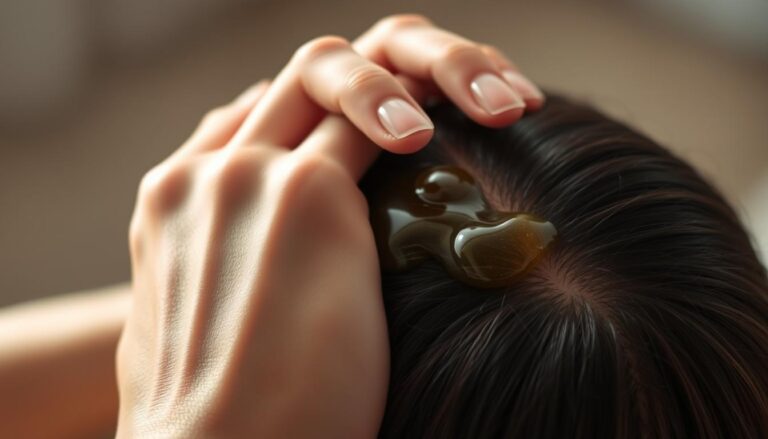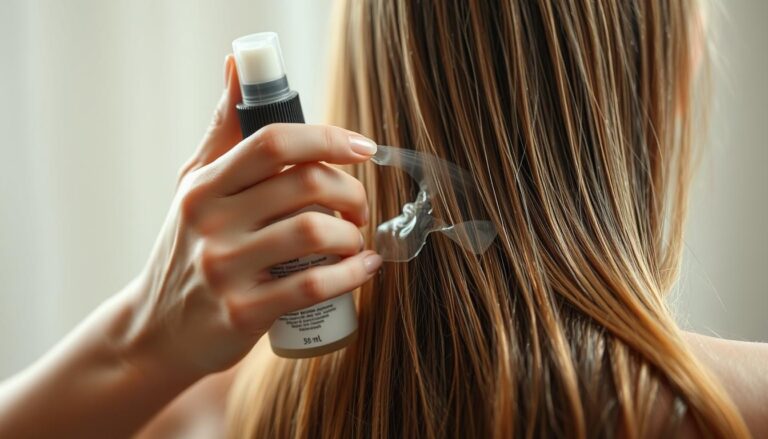At Glowskinhub.com, we believe beauty isn’t just a look—it’s a feeling
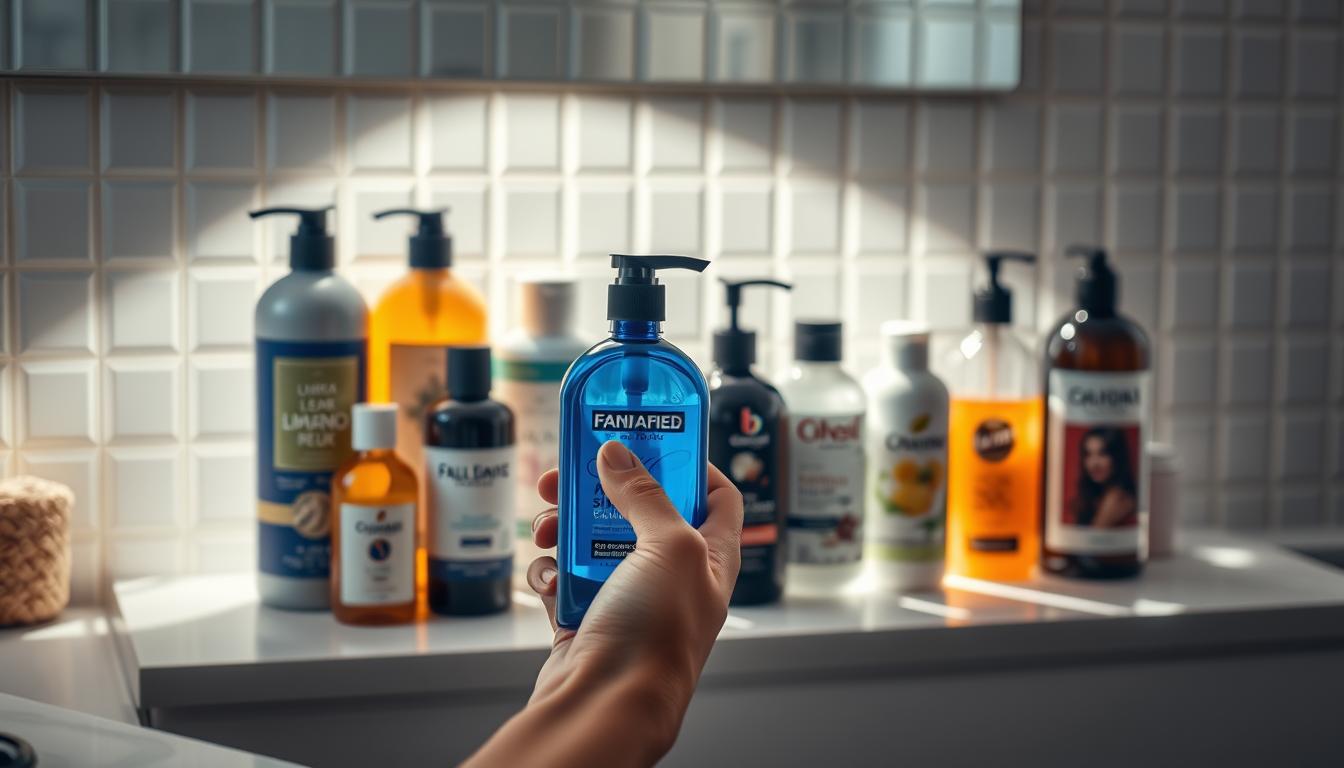
How to choose the right shampoo for your hair type
Choosing the right shampoo can be a daunting task, given the numerous options available in the market. With so many products claiming to be the best shampoo for your hair type, it’s easy to get confused.
Understanding your hair type is crucial in making an informed decision. Whether you have dry, oily, or combination hair, using the right shampoo can make a significant difference in your Hair Care routine.
By selecting a shampoo that caters to your hair’s specific needs, you can achieve healthier, more manageable locks. In this article, we will guide you through the process of choosing the right shampoo for your hair type, providing you with valuable Hair Care tips.
Key Takeaways
- Identify your hair type to choose the best shampoo.
- Consider your hair’s specific needs, such as moisture or oil control.
- Choose a shampoo that is formulated for your hair type.
- Be aware of the ingredients and their effects on your hair.
- Read reviews and product labels to make an informed decision.
Understanding Your Hair Type and Its Needs
Understanding your hair type is crucial for choosing the right Hair Care products. Different hair types have distinct characteristics that require specific care. Whether you’re dealing with dryness, oiliness, or damage, knowing your hair type is the first step towards achieving your hair goals.
Common Hair Types and Their Characteristics
Hair types are generally categorised based on texture and pattern. Understanding these categories can help you narrow down your hair type.
Fine, Medium, and Thick Hair Textures
Hair texture refers to the thickness or diameter of individual hair strands. Fine hair has a smaller diameter and can be prone to oiliness, while thick hair has a larger diameter and can be more challenging to manage. Medium hair falls somewhere in between.
Straight, Wavy, Curly, and Coily Hair Patterns
Hair pattern refers to the natural shape or curl pattern of your hair. It ranges from straight (little to no curl) to coily (tightly coiled curls). Wavy and curly hair types fall in between, with varying degrees of curl definition.
Simple Methods to Determine Your Hair Type at Home
To determine your hair type, start by washing your hair with a gentle cleanser and letting it air-dry. Observe its natural texture and pattern. You can also perform a simple strand test by taking a single hair strand and measuring its thickness against a piece of paper or a thread. 
By understanding your hair’s texture and pattern, you can better identify your hair type and choose products that cater to its specific needs.
Why Using the Correct Shampoo Matters
Using the right shampoo is essential for achieving and maintaining optimal hair health. The shampoo you choose can significantly impact your hair’s appearance and overall condition.
The Science Behind Shampoo Formulations
Shampoos are formulated with various ingredients designed to cleanse and nourish the hair. A shampoo formulation is tailored to address specific hair concerns, such as dryness, oiliness, or damage. Understanding the science behind these formulations can help you make an informed decision.
How Improper Products Affect Hair Health
Using a shampoo not suited to your hair type can lead to various issues, including dryness, excessive oiliness, or damage. For instance, using oily Skin products on dry hair can strip it of its natural oils, exacerbating dryness.
Common Hair Issues from Wrong Shampoo Choices
Some common problems associated with using the wrong shampoo include:
- Dryness and brittleness
- Excessive oiliness
- Irritation of the scalp
A well-chosen shampoo, as part of an oily Skin regimen for those with oily Skin, can help mitigate these issues.
| Hair Type | Common Issues | Recommended Shampoo Characteristics |
|---|---|---|
| Dry | Dryness, brittleness | Moisturising, gentle |
| Oily | Excessive oiliness | Oil-controlling, balancing |
| Normal/Combination | Balancing oil and moisture | Balanced formulation |
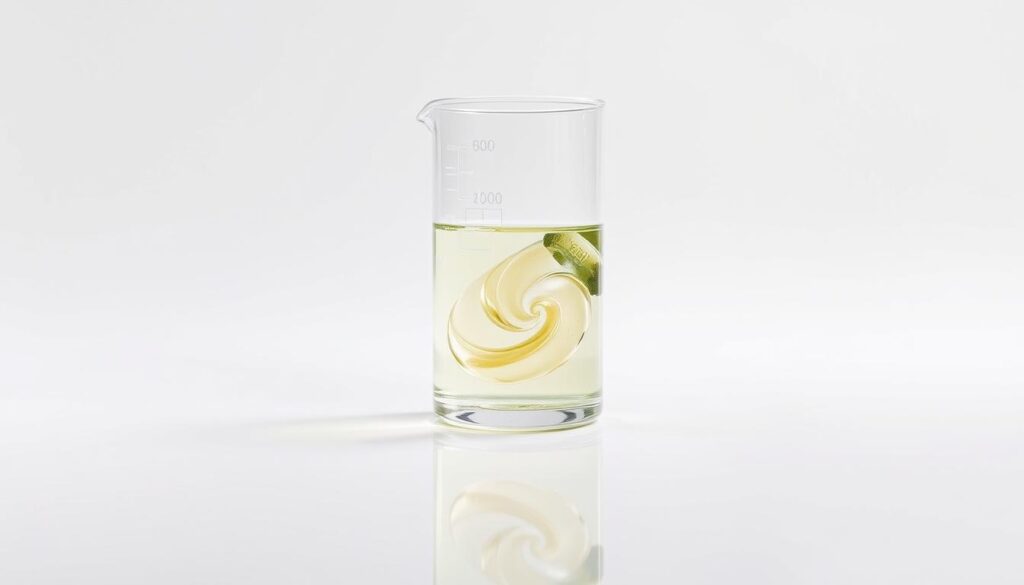
Decoding Shampoo Labels and Ingredients
Decoding shampoo labels is a crucial step in choosing the right product for your hair type. With numerous ingredients and marketing claims, it can be overwhelming. However, understanding what you’re applying to your hair is essential for achieving the desired results.
Essential Ingredients to Look For
When examining shampoo labels, look for ingredients that nourish and protect your hair. Coconut oil and shea butter are excellent moisturizers, while keratin helps repair damaged hair. For those with oily Skin, a shampoo containing tea tree oil can help balance scalp conditions.
Potentially Harmful Ingredients to Avoid
Some ingredients can do more harm than good. Sulfates, commonly found in shampoos, can strip hair of its natural oils, leading to dryness. Parabens have also been linked to potential health concerns. Opting for sulfate-free and paraben-free shampoos can be a safer choice.
Navigating Marketing Claims vs. Reality
Marketing claims can be misleading. Terms like “natural” or “organic” don’t always mean the product is entirely natural or organic. Understanding British labelling standards can help you make informed decisions.
Understanding British Labelling Standards
British labelling standards require manufacturers to list ingredients in a specific order, typically based on concentration. Being aware of these standards can help you identify the primary ingredients in your shampoo.
| Ingredient | Benefit | Potential Drawback |
|---|---|---|
| Coconut Oil | Moisturizes hair | Can weigh down fine hair |
| Sulfates | Effective cleansing | Can strip natural oils |
| Keratin | Repairs damaged hair | May not be effective on very damaged hair |

“The right shampoo can make all the difference in your Hair Care routine. Understanding the ingredients is key to making an informed decision.”
How to Choose the Right Shampoo for Your Hair Type
The key to optimal Hair Care lies in choosing a shampoo that is tailored to your specific hair type and needs. While understanding your hair type is crucial, other factors such as scalp condition and hair porosity also play significant roles.
Beyond Basic Hair Type: Other Assessment Factors
When choosing a shampoo, it’s not just about whether you have dry, oily, or normal hair. Other factors can significantly impact the health and appearance of your hair.
Scalp Condition Considerations
Your scalp condition can greatly affect your hair’s overall health. For instance, a dry scalp may require a moisturising shampoo, while an oily scalp might need a shampoo that controls oil production.
Scalp conditions such as dandruff or eczema require special attention. Using a shampoo formulated for your specific scalp condition can help alleviate symptoms.
| Scalp Condition | Recommended Shampoo Type |
|---|---|
| Dry Scalp | Moisturising Shampoo |
| Oily Scalp | Oil-Control Shampoo |
| Dandruff | Anti-Dandruff Shampoo |
Understanding Hair Porosity and Its Impact
Hair porosity refers to how well your hair can absorb and retain moisture. Understanding your hair’s porosity can help you choose a shampoo that effectively cleans and nourishes your hair.
Testing Your Hair’s Porosity Level
A simple water test can help determine your hair’s porosity. By observing how a strand of your hair behaves when submerged in water, you can assess its porosity level.

High porosity hair absorbs water quickly, while low porosity hair tends to float.
Best Shampoos for Dry and Damaged Hair
The quest for healthy, luscious locks begins with choosing the best shampoo for dry and damaged hair. Dry hair can be particularly challenging due to its lack of moisture and potential for further damage with improper care.
Moisturising Ingredients That Actually Work
When searching for a shampoo to combat dryness and damage, it’s crucial to look for ingredients that are known for their moisturising properties. Ingredients such as coconut oil, argan oil, and shea butter are renowned for their ability to hydrate and nourish dry hair.
- Coconut oil: Provides deep hydration and helps repair damage.
- Argan oil: Rich in antioxidants, it helps protect hair from further damage.
- Shea butter: Intensely moisturises and conditions dry hair.
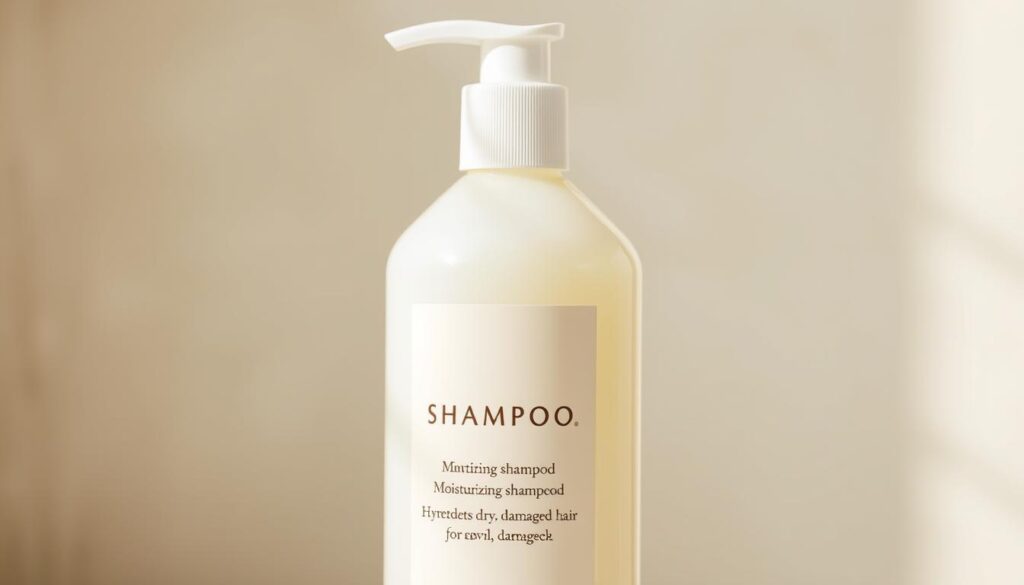
Top UK Brands for Dry Hair Repair
The UK market offers a variety of shampoos designed for dry and damaged hair. Top brands include:
- Moroccanoil: Known for its argan oil-based products.
- L’Oréal Paris: Offers a range of shampoos with nourishing ingredients.
- Free&Free: Provides gentle, effective formulations.
High Street vs. Salon Options
When deciding between high street and salon shampoos, consider your hair’s specific needs and your budget. Salon products often contain higher concentrations of active ingredients, while high street options can be more affordable and still effective.
Usage Tips for Maximum Benefit
To get the most out of your shampoo, follow these simple tips:
- Use lukewarm water instead of hot water to avoid stripping your hair of its natural oils.
- Massage the shampoo into your scalp gently to stimulate blood flow.
- Leave the shampoo on for a few minutes before rinsing to allow the ingredients to work effectively.
By choosing the right shampoo and following a proper Hair Care routine, you can significantly improve the health and appearance of your dry and damaged hair.
Ideal Shampoos for Oily Hair Types
Oily hair types need shampoos that can manage oil production without drying out the scalp. Finding the right balance is crucial for maintaining healthy hair.
Balancing Cleansing Without Over-Stripping
Cleansing oily hair requires a delicate balance. Over-cleansing can lead to increased oil production as the scalp tries to compensate for the loss of natural oils. A gentle, yet effective shampoo is essential.
- Look for shampoos containing tea tree oil or salicylic acid, which help control oil production.
- Avoid harsh ingredients that strip the hair of its natural oils.
Recommended Products Available in the UK
The UK market offers a variety of shampoos suitable for oily hair. Here are some recommendations:
Budget-Friendly Options
- Nivea’s Extra Volume Shampoo
- L’Oréal Paris Elvive Extraordinary Clay Shampoo
Premium Formulations Worth the Investment
- Bumble and bumble Scalp Detox Charcoal Shampoo
- Kérastase Specifique Bain Diva Shampoo
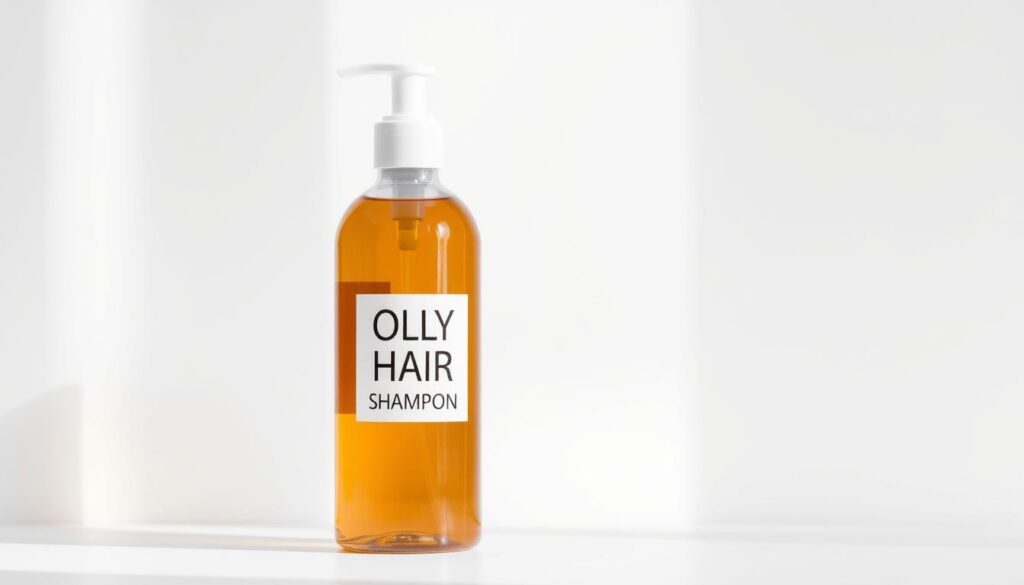
Optimal Washing Frequency for Oily Scalps
Washing oily hair daily can sometimes exacerbate the issue. Aim to wash your hair 2-3 times a week to maintain a healthy balance. Using a dry shampoo between washes can help manage oil production.
“The key to managing oily hair is finding a shampoo that cleanses effectively without stripping the hair of its natural oils.”
By choosing the right shampoo and adopting a suitable washing routine, individuals with oily hair can achieve a healthier, more balanced scalp.
Selecting Shampoos for Normal and Combination Hair
Choosing the perfect shampoo for normal or combination hair involves understanding its unique needs. Normal hair is characterized by a balance between oil production and moisture retention, while combination hair typically presents with an oily scalp and dry ends.
For both types, a balanced formulation is crucial. This means looking for shampoos that cleanse effectively without stripping the hair of its natural oils.
Balanced Formulations for Maintenance
A good shampoo for normal or combination hair should maintain this balance. Ingredients like glycerin and panthenol help retain moisture, while gentle cleansers ensure the scalp remains healthy.
Some shampoos are specifically designed to address the dual challenges of combination hair. For instance, products containing tea tree oil can help control oil production on the scalp.
| Ingredient | Benefit | Best For |
|---|---|---|
| Glycerin | Moisture Retention | Normal Hair |
| Tea Tree Oil | Oil Control | Combination Hair |
| Panthenol | Hydration | Both |
Versatile Products for Changing Hair Needs
As hair needs change with the seasons, so should your shampoo. In the UK, where weather conditions vary significantly, a versatile shampoo can adapt to these changes.
Seasonal Adjustments for British Weather Conditions
During the dry winter months, a moisturizing shampoo can help combat dryness. Conversely, in the oily summer months, a clarifying shampoo can help control oil production.

By adjusting your shampoo according to the season and using products that cater to your hair type, you can maintain healthy, balanced hair throughout the year.
Specialised Shampoos for Curly and Textured Hair
Curly and textured hair types benefit greatly from specialised shampoos designed to enhance their natural Beauty. These hair types require extra moisture and gentle care to prevent dryness and breakage.
Moisture-Retention Formulations
Shampoos formulated for curly hair focus on moisture retention, using ingredients like coconut oil, shea butter, and argan oil. These ingredients help lock in moisture, reducing frizz and enhancing curl definition.
Curl-Enhancing Products Available in the UK
The UK market offers a variety of curl-enhancing shampoos. Brands like DevaCurl and Curlsmith are popular among curly-haired individuals. These products are designed to gently cleanse while maintaining the hair’s natural moisture barrier.
Products for Different Curl Patterns
Different curl patterns require specific care. For tighter curls, products with more intense moisturising properties are recommended. Looser curls can benefit from lighter formulations that enhance wave definition without weighing the hair down.
| Curl Type | Recommended Ingredients | Product Examples |
|---|---|---|
| Tight Curls | Coconut Oil, Shea Butter | Curlsmith The Wash |
| Loose Curls | Argan Oil, Glycerin | DevaCurl Low-Poo |
Co-Washing and Low-Poo Methods Explained
Co-washing involves washing hair with conditioner instead of shampoo, helping retain moisture. Low-poo methods use a gentle, sulfate-free shampoo to cleanse without stripping the hair of its natural oils. Both methods are beneficial for curly and textured hair, reducing dryness and preserving curl integrity.
Addressing Specific Hair Concerns with Targeted Shampoos
Addressing particular hair problems effectively often starts with selecting the appropriate shampoo. Different hair concerns, such as dandruff, thinning hair, or colour-treated hair, require shampoos that are formulated to address these specific issues directly.
Effective Anti-Dandruff Solutions
Dandruff can be a persistent issue, but there are several effective shampoos available that can help manage it. Medicated shampoos containing ingredients like zinc pyrithione or ketoconazole are often recommended.
Medicated vs. Natural Options
While medicated shampoos are effective, some individuals prefer natural alternatives. Ingredients like tea tree oil have antifungal properties that can help soothe the scalp.
Products for Thinning Hair and Hair Loss
For those experiencing thinning hair or hair loss, shampoos with ingredients like biotin and keratin can be beneficial. These ingredients help strengthen hair follicles and promote healthier hair growth.
Colour-Protection Formulations for Dyed Hair
Colour-treated hair requires special care to maintain vibrancy. Colour-protection shampoos are formulated to lock in colour and moisture, reducing fading.
Extending Colour Vibrancy Between Salon Visits
Using the right shampoo can significantly extend the life of your hair colour. Look for shampoos that are sulphate-free and formulated with colour-protecting ingredients.
By choosing a shampoo that is tailored to your specific hair concerns, you can achieve healthier, more vibrant hair. Whether you’re dealing with dandruff, thinning hair, or colour-treated locks, there’s a shampoo out there that’s right for you.
Natural and Organic Shampoo Options
The shift towards natural and organic shampoos is revolutionizing the way we care for our hair. As consumers become more environmentally conscious, the demand for cleaner, greener Hair Care products is on the rise.
Benefits of Natural Formulations
Natural shampoos are typically free from harsh chemicals, making them a gentler option for Hair Care. They often include natural ingredients that nourish and protect the hair. Some key benefits include:
- Reduced risk of irritation
- Environmentally friendly packaging
- Nourishing properties from natural ingredients
Top Eco-Friendly British Brands
The UK is home to several eco-friendly brands that are making significant strides in natural Hair Care. Some notable brands include:
- Free+True: Known for their plastic-free packaging
- Neal’s Yard Remedies: Offers a range of organic shampoos
Plastic-Free and Sustainable Packaging Options
Many brands are now focusing on sustainable packaging. This includes using recycled materials, biodegradable packaging, and eliminating single-use plastics.
DIY Shampoo Alternatives for the Adventurous
For those willing to experiment, DIY shampoos can be a fun and effective alternative. Common ingredients include baking soda, apple cider vinegar, and coconut oil. These ingredients can help cleanse and nourish the hair without harsh chemicals.
Building a Complete Hair Care Routine
Creating a comprehensive Hair Care routine is essential for maintaining healthy, vibrant hair. A well-structured routine not only addresses specific hair concerns but also enhances overall hair health.
Essential Complementary Products
To complement your shampoo, it’s crucial to incorporate other products into your Hair Care routine. These include:
Conditioners, Masks, and Treatments
- Conditioners: Help detangle and add moisture to your hair.
- Masks: Provide an intense dose of nourishment and repair.
- Treatments: Target specific issues like dandruff, color protection, or hair loss.
For instance, using a moisturizing conditioner can significantly improve dry hair’s manageability.
Washing Techniques for Different Hair Types
The way you wash your hair can significantly impact its health. For oily hair, a gentle, frequent washing technique is recommended, while dry or damaged hair benefits from less frequent washing with lukewarm water.
Weekly Hair Care Schedules for Busy Lifestyles
Even with a busy schedule, maintaining a Hair Care routine is achievable. A simple weekly schedule can include:
- Washing and conditioning your hair 2-3 times.
- Applying a hair mask once or twice a week.
- Using a leave-in conditioner or Serum on damp hair.
By incorporating these steps, you can maintain healthy, vibrant hair despite a hectic lifestyle.
Conclusion: Maintaining Healthy Hair with the Right Products
Maintaining healthy hair requires a thoughtful approach to Hair Care, starting with the right shampoo for your hair type. By understanding your hair’s needs and selecting products that cater to those needs, you can achieve beautiful, healthy hair. Whether you have dry, oily, or normal hair, using the correct shampoo can make a significant difference in its overall health and appearance.
Effective Hair Care tips include being mindful of the ingredients in your shampoo, avoiding harsh chemicals, and opting for products that balance cleansing with nourishment. For those with oily Skin, incorporating a best skincare routine for oily Skin can also help maintain a healthy scalp, which is closely linked to healthy hair. By combining the right shampoo with a consistent Hair Care routine, you can enjoy healthy, vibrant hair.
By applying the knowledge gained from this guide, you can take the first step towards achieving the hair you desire. Healthy hair is not just about aesthetics; it’s also a reflection of overall health. With the right products and a little care, anyone can have healthy, beautiful hair.

